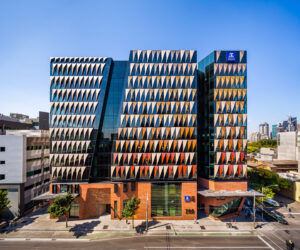Report on energy standards in the National Construction Code released
Setting stronger energy standards in the National Construction Code for new buildings would, between now and 2050, reduce energy bills by up to $27 billion, lower energy network costs by up to $7 billion and deliver 78 million tonnes of cumulative emissions savings, according to a new report.
Built to Perform – An Industry Led Pathway to Zero Carbon Ready Building Code by the Australian Sustainable Built Environment Council (ASBEC) and ClimateWorks Australia, outlines a series of forward pathways for Code energy requirements that cover a range of building types and climates across Australia.
It presents the final results of the Building Code Energy Performance Trajectory Project, aimed at supporting the adoption of medium-term targets and trajectories for mandated minimum energy requirements in the Code.
The Green Building Council of Australia (GBCA) welcomed the new report, with Chief Executive Officer Romilly Madew saying it highlights the need for government to unlock the full potential of the code and target the cost-effective opportunities found in the buildings sector to improve Australia’s energy efficiency and affordability.
“Better buildings, built to perform in a zero carbon future, are one of the easiest and cheapest ways to reduce Australia’s emissions, save money and create comfortable homes and workplaces,” Ms Madew said.
“This report shows that the triple-bottom-line dividend from plotting a zero net carbon path in the code early is enormous. By 2050, Australia will need to be at or near zero net emissions and that means the code must ensure that buildings under construction today are being built to meet the energy performance required in the future.”
“A clear trajectory for the code would also give industry the certainty to innovate and invest in high performing buildings at lower cost. We welcome the report’s recommendation for well-designed and implemented targets along with a clear, transparent process for upgrading code energy requirements.”
“The world-leading practices being implemented by a growing number of Australian companies need to extend further across industry. The code is a vital tool for lifting the bar across the board and our communities are the ones who will benefit, from reduced out-of-pocket energy costs and a healthier, lower-emissions built environment.”
“However, the code can only take us part of the way to net zero. Code improvements must go hand in hand with other measures to deliver a zero carbon buildings sector by 2050.”
“Through our Carbon Positive Roadmap for the built environment project, the Green Building Council of Australia is also proposing a pathway for the building industry to decarbonise by raising the benchmark for sustainable design, construction and building operation in Australia.”
“The Carbon Positive Roadmap presents many complementary measures which, along with a strengthened National Construction Code, will help lead the delivery of a more sustainable built environment and meet our international emissions commitments.”
Highlights from the report
Implementing the energy targets, performance and efficiency requirements outlined in Built to Perform – An Industry Led Pathway to Zero Carbon Ready Building Code would:
- Reduce household bills by up to $900 per year for each household, while saving thousands of dollars each year for non-residential buildings;
- Reduce electricity network investments across Australia by $7 billion between now and 2050;
- Deliver 15 million tonnes of cumulative emissions reductions to 2030, and 78 million tonnes to 2050; and
- Even conservative improvements in code energy efficiency requirements could deliver between 19 and 25 per cent of the energy savings required to achieve net zero energy in new residential buildings, 22-34 per cent of the required energy savings for commercial sector buildings, and 35-56 per cent for public sector buildings by 2030.
A copy of the Built to Perform report is available here.



